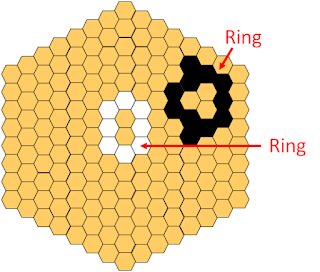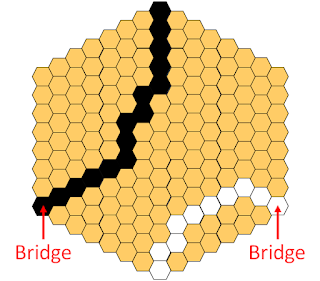Role-Based Project Management Software
Agile Case Study (1/5): Project kick-off
May 16, 2021

The following case study is originally published as the chapter 23 of the Mike Cohn’s book entitled Agile Estimating and Planning. In this chapter, the author, in order to summarize and put into practice many key points explained in the book, develops a case on the experience about the first agile project in a fictitious firm called Bomb Shelter Studios, participating the following characters:
- Frank: Product Manager.
- Allan: Programmer.
- Sasha: Architect.
- Carlos: Agile Coach.
- Prasad: Tester.
- Rose: Art Designer.
- Delaney: Business Analyst.
- Laura: CFO.
- Phil: CEO.
This chapter starts with the convenience of going agile to manage a new software project.
[…]
The flight was a long one but the conference had been a success. Flights back from the east coast were always the hardest; but on this flight Frank had upgraded to first class, exchanging some of his frequent flyer miles for a bit more room and comfort. Reflecting back on the week’s events, Frank settled into his seat.
As a product manager for Bomb Shelter Studios, Frank knew that the company’s latest game, Deep Black & White, would do well. It played a game called Go that was extremely popular in Japan, China, and Korea but had only a moderate following in Europe, North America, and the rest of the world. The programmers on his team had come up with artificial intelligence breakthroughs that allowed Deep Black & White to play at a level known as 5-dan. This was still far from the 9-dan level of the best professional players but it was far ahead of where any of Bomb Shelter’s competitors were.
Frank was ecstatic that Deep Black & White would be released and marketed in Asia through the distribution deal he’d negotiated with a publisher at the conference. The revenue from sales in those markets would really help Bomb Shelter. Frank knew that the additional six months it took to complete Deep Black & White had almost been the end of the small, privately-held game development company he had cofounded.
From its inauspicious beginnings three years ago, Bomb Shelter Studios had become recognized as a high-end developer of thinking and strategy games. In addition to the newly finished Deep Black & White, Bomb Shelter had developed games that played chess, backgammon, reversi, bridge, checkers, mancala, and other similar games. Once a game was developed, distribution rights were sold to a publisher who would take care of all production and distribution, allowing Bomb Shelter to focus entirely on developing new games.
While Frank had been at the conference, his analyst and small team back in Santa Barbara had been thinking about the new game, Havannah, that they were nearly ready to start. Because of the problems with Deep Black & White—not just the six-month delay but also finding too many bugs and uncovering some usability issues late—Frank knew that they had to find a different way of planning and developing projects.
Sasha, the company’s lead architect, researched some ideas the team had. She suggested using what they were calling an “agile process” for the next project. Frank wasn’t exactly sure what that meant, but he was sure they needed to do something different. Being six months late on the next game wasn’t going to work. Everyone on the team was excited to give an agile process a try and they all knew what was at stake.
Day 1: Monday Morning
“Good morning, everyone,” Frank said as he entered the conference room. It was still a minute before nine and almost the entire team was already waiting for him. That was a good sign. Even though the team was tired from the final push on Deep Black & White, it looked like they were ready to get right back in it for Havannah. “Good morning, Frank. I saw your email about Deep Black & White. That’s great news on the distribution deal,” said Allan, the C++ programmer who had coded the artificial intelligence engine that let Deep Black & White play such a strong game. “Have a donut, Frank,” Sasha said as she pushed the nearly empty box across the table.” “Thanks,” Frank said, taking a maple bar from the box. “Frank, this is Carlos,” Sasha said. “Carlos is an experienced agile coach. We’ve brought him in to help us as we learn to work in this new, agile way.” Frank and Carlos shook hands and exchanged greetings. “It looks like everyone is here except Rose,” Frank said. “Let’s go ahead and get started. We can fill her in later. We probably won’t talk about the artwork much in this meeting anyway.” “We can’t start, Frank,” Carlos said. “This is important. We need the whole team here. A big part of the benefit we’re after from trying an agile process requires everyone to participate. Rose may not have much to say about the artificial intelligence in the move engine. But, even so, we need her perspective if we want to plan the best possible game we can.” “She always gets here about five minutes after nine on Monday. She drops Brooke at school on Monday, Wednesday, and Friday. She’ll be here,” Prasad said, finishing almost exactly as Rose opened the door to the conference room. “Sorry. Traffic,” Rose said, quickly sliding into a chair. “So, Delaney, you’ve been doing the product research on Havannah,” Frank said to the analyst. “It’s been awhile since I’ve thought about that game. I’m sorry to ask, but can you tell me how to play it again?” “Sure, Frank. First, the board looks like this,” Delaney said as she pulled a wooden board from her bag and placed it on the table.



